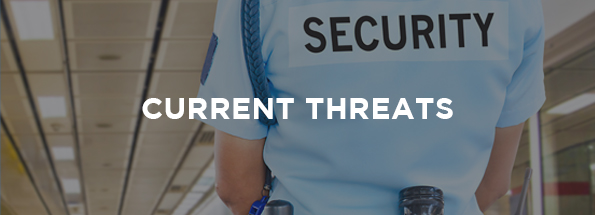The Opioid Crisis and Your Public Restrooms: Mitigating the Risks

As the opioid crisis continues its rise in the U.S., an unexpected threat has confronted businesses and other entities that offer public restrooms. It turns out more and more public restrooms are being used by addicts as a relatively safe, clean, and private place to get high.
For their part, the businesses who operate these restrooms report more cases of syringes and drug remnants left behind. Overdosed individuals (dead and alive) are being found by unsuspecting employees and customers in increasing numbers.
The situation of opioid use and public restrooms, which NPR referred to as “ground zero in the opioid epidemic,” presents businesses with a difficult decision. Do they restrict access, close their restrooms entirely, or keep their restrooms open and find other ways of managing the risks?
4 Aspects of Risk Mitigation:
Addict or not, no business owner wants to have someone die or harm themselves, especially on the company’s property. The opioid crisis is forcing business owners and managers to find ways to ensure the safety and convenience of customers and staff who use the restrooms, while also considering measures to increase the safety of addicts.
Measures taken must be based on a clear-eyed risk assessment. Managers cannot simply hope the addicts will go away.
There are several aspects of risk mitigation, some purely local managerial actions and others involving police or policy responses. Here we look at four areas you may want to consider in addressing the issue:
1. Access Control
The first thought for many owners is access control. If an addict cannot get into a restroom, problem solved. However, it’s harder to do than you might think. Here are some tactics companies have tried:
- Keys or lock combinations controlled by staff can limit access. However, these are also easily defeated, as the addict could just linger near the door until someone exits, then grab the door before it closes.
- Some businesses station a guard next to the restroom entrance and require a receipt for access. To combat this, according to the NPR report, an addict named ‘Eddie’ says he just gets a receipt from the trash.
- Design can help in some cases. Airports, for example, usually have restrooms that are permanently open via hallways that block visibility from the main corridor, removing the privacy that the addict needs. This can be an overly-expensive or impossible undertaking for many businesses.
2. Adaptation
Given that addicts exist and will continue to exist, some owners have modified restrooms to limit the attractiveness of the room for the addict.
- Restrooms can be modified to be less accommodating by removing shelves, cubbies, ceiling tiles, or other hiding places where an addict might store drugs or paraphernalia.
- A popular tactic has been the use of blue lighting, which makes it more difficult to find a vein for injection. However, many addicts will inject anyway, increasing the chances of a botched attempt that spreads blood and potentially disease.
- Some managers even train staff to use naloxone, a drug that can reverse opioid overdoses, in case someone is found passed out. Naloxone is widely available.
3. Policy
Public intervention to reduce the risk of overdosing deaths is controversial, part of the wider debate over criminalization versus rehabilitation. Several states have considered laws to permit “supervised injection facilities,” though these may run afoul of Federal law. Nevertheless, there have been several public policy attempts that businesses might look to for inspiration in forming their own policies.
- CNN reports that Health Canada has approved a number of “safe injection sites” where addicts can use openly in a controlled environment. One site in Vancouver has been operating since 2003 and has not had a single person die even though there were 6,000 cases of overdosing.
- A city could install “Portland loos,” named after the Oregon city where they were invented. The loos have no running water, no mirrors, no porous surfaces, and limited privacy because police can peer into them at top and bottom.
- One ambitious example is the Corner Project in New York City, a syringe exchange program. The Project offers a restroom to users which its managers insist is just a restroom, not a supervised injection facility. There are no medical personnel on site, but an intercom is used to check on users, there is naloxone on site, and employees can quickly enter if necessary.
4. Design
A number of agencies have stipulated how restrooms should be designed to increase safety for addicts to use as injection havens. Public restroom managers may be able to adopt some of these practices. One example is from the New York state “Syringe Exchange Policies and Procedures” guide.
- Restrooms should support hygiene: cleaner injections reduce risk of infection.
- Tables and other surfaces should be a non-porous material for easier cleaning.
- Staff should have a means to access the restroom at all times.
- Doors should swing out, not in, so a collapsed addict does not block entry.
- Intercom systems for two-way communication are desirable.
- The restroom needs a regular cleaning schedule.
- A biohazard box for used needles, drugs, or bloody patches should be provided.
The unfortunate reality is that there are millions of people who are addicted to opioids and too many of whom graduate to injection. If managers want to continue providing access to public restrooms as a valued service to their customers, they will have to address the risks that addicts pose. How is your company addressing the concern? Talk to a Lowers & Associates risk management consultant for a complete risk assessment and advice.



